Inside a 510 vape atomiser connector
We wrote this page back in 2010, when vape atomiser (atomizer) connectors were constructed differently than today. We’ve left it on our site in case anyone finds it interesting or still applicable to their vape equipment.
A common problem reported to us is "failure to fire", which is usually due to a simple connectivity issue, frequently caused by over-tightening separate vape parts. Many e-cig parts have moveable centre-poles to enable proper connection, and over-tightening can depress the centre pin, preventing contact between the tank and the battery or device. Rule #1: Never over-tighten — screw until contact is made, and stop.
The connection between your e-cig atomiser/cartomiser and battery is part of the electrical circuit. The outside of each connector acts as the negative pole (ground) and the center pin is the positive pole. These photos show where contact is made inside a 510 connector and where it can fail.
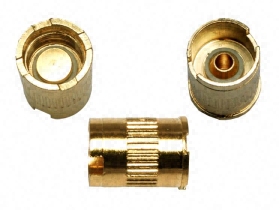
Pictured is a basic 510 battery connector. The flat part connects to the centre/positive pin on the tank. The insulator protects the centre pin from touching the rest of the connector and prevents a short.
The same connector with the centre pin removed. You can better see the rubber insulator that prevents the pin from making contact with the rest of the connector.
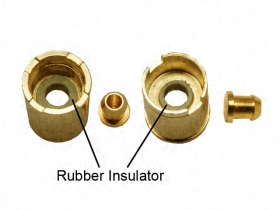
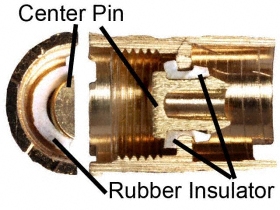
Cross-sectional photo showing top and side views of the 510 connector. You can see the centre pin, insulator ring, and connector threads where the tank screws in.
Close-up of an old 510 cartomiser tank. Centre ring is positive pole, outside is negative. A rubber insulator separates the two poles. Gaps may be subtle to the naked eye.
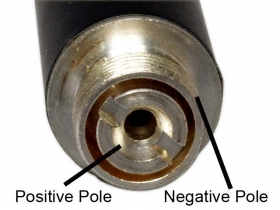
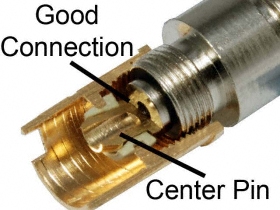
Cross-section showing good connection between battery and tank. Centre pins make positive contact, threads of the connector make negative contact.
If there’s a gap between the centre pins of battery and tank, the device will not fire. Over-tightening can compress the connector and cause issues. Some connectors allow centre pin adjustment (see video below).
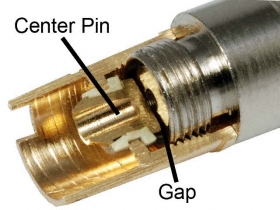
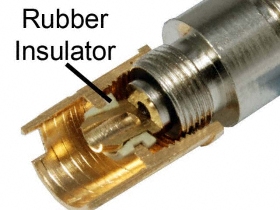
Over-tightening can warp the insulator ring. If this happens, the centre pin may short to the outside, potentially damaging the tank, device, or batteries.



















